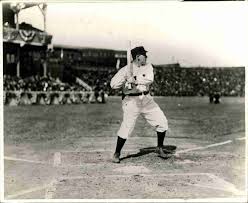Sabermetric Series: BABIP For Dummies
The purpose of
Batting Average on Balls In Play, BABIP, is to add a luck factor which can be used when evaluating players previous production. BABIP is a ratio of plate appearances to the numbers of balls put into play. The result is a ratio similar to Batting Average, however it is measured on a scale which removes home runs and strikeouts. By removing Home Runs and Strikeouts, BABIP measures the numbers of times which a hit fell when a defender had the opportunity to make a play on it. If we agree that defenders will get to balls at the same rate over the long run, then BABIP shows us how lucky or unlucky a player is based on their deviation from the mean.This statistic can be used with both pitchers and hitters, but it has been found to be much more useful in regards to pitching. For hitters, BABIP can be influenced by skill much more than luck. A hitter has the ability to run out infield singles and shoot gaps to influence BABIP. But a pitcher who faces many different hitters, BABIP will fall gravitate to a mean. Research has found that the mean for BABIP is around .300 and the conclusion can be drawn that anyone with a higher BABIP is unlucky (lucky/good for hitters)…lower than .300 and you're lucky (unlucky/bad for hitters).
When evaluating pitching, BABIP can be used to explain other statistics like standard 5×5 stats ERA and WHIP. A high BABIP is generally a sign that a pitcher will improve upon their previous production. The higher BABIP means that more hits are falling which have a negative impact on ERA and WHIP. But we expect BABIP to be around .300 and in-order for that to take place, we expect a regression to bring the average to the mean. So to get to .300, there will be a period of low BABIP to account for the higher BABIP in the past.
Lets look at some examples
How bad was
Mike Pelfrey in July? Well to go along with his 10.01 ERA, Pelfrey put up a insane BABIP of .482!!! Seriously, half of the balls which were put into play fell for base hits. There is no way that a rate like that could ever keep going. Even with his amazing start, his BABIP is .342 for the year, so we should expect improvement to finish the season off. But keep in mind that Pelfrey has a career BABIP higher than .300, so it may not be a serious improvement.One last thing to take into account when evaluating BABIP is the defense behind the pitcher. Earlier I stated that we need to work with the assumption that defenders will get to balls at the same rate over the long run. However, it is safe to assume that pitchers for teams with good defense have a lower BABIP than a pitcher who is on a team with bad defense. So take that into account when looking at numbers that haven't deviated far from the mean. Use the entire teams BABIP and compare that with the pitchers BABIP to adjust your assumptions.
For Fantasy purposes, BABIP is a great tool to use to gauge some hidden value. It can be used to sell high or buy low. On draft day, use BABIP to discount a break out season or to justify an upcoming rebound year. In our game we need all the help we can get, if you're not using BABIP, you're not seeing the whole picture.
Have any other good BABIP examples?
Leave us a comment or hit us up on Twitter @TheFantasyFix!
Written by James Weston exclusively for TheFantasyFix.com. You can follow him on Twitter @TheRealJamesA.
Tags: The Fantasy Fix, Fantasy Baseball Advice, Fantasy Sports Blog, Fantasy Baseball, Sabermetrics, MLB, BABIP, Mike Pelfrey, Mat Latos, New York Mets, San Diego Padres






